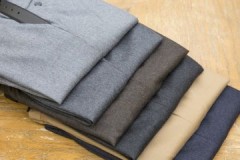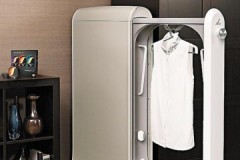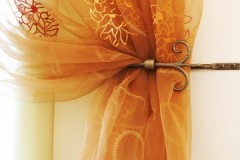How to iron a raincoat made of different fabrics correctly and neatly?
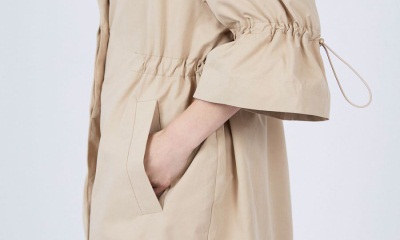 A raincoat is a wide outer garment that can be sewn from various materials. With improper storage and careless wear, a thing can wrinkle.
A raincoat is a wide outer garment that can be sewn from various materials. With improper storage and careless wear, a thing can wrinkle.
To restore the appearance of the product will help ironing, which should take into account all the features of tailoring and texture of the material of manufacture.
Read about how to iron a raincoat at home in the article.
Content
Ironing at home
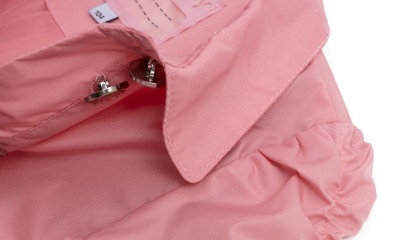 Depending on the material of manufacture, the raincoat can be demi-season or summer clothes.
Depending on the material of manufacture, the raincoat can be demi-season or summer clothes.
This wardrobe item is sewn from natural and artificial materials.
Taking into account the specific model and the designer's ideas, products may have:
- overhead elements (pockets, harnesses, etc.);
- belt;
- embroidery;
- applique, etc.
Ironing procedure:
- collar;
- sleeves;
- shelves;
- back;
- belt and other items that can be removed.
Collar
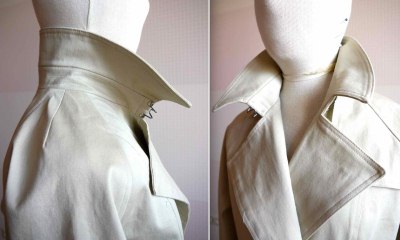 Traditional raincoats have a collar that must be ironed first from the seamy side, and then from the front side.
Traditional raincoats have a collar that must be ironed first from the seamy side, and then from the front side.
For a stand-up, shawl, or other type that involves free folding of the fabric, the fold is not smoothed out.
Depending on the type of material, the collar is ironed directly on the fabric (for example, this is suitable for cotton) or through an additional fabric (suitable for a leather coat).
Sleeves
If the cuffs are provided in the raincoat model, then the ironing of the sleeves begins with them.... Iron them from the inside out, and then from the face. Especially carefully iron the place near the button.
Shelves and back
To iron the front of the raincoat, start from the shelf on which there are buttons. If the fastener is a zipper, it doesn't matter which part comes first. The ironing process starts from the bar. When proceeding to ironing the backrest, attention must be paid to the side seams.
It is necessary to ensure that the sole of the iron does not touch the fittings on the product, since plastic can melt under the influence of high temperature, and metal elements can damage the very heating surface of the iron.
How do material characteristics affect the process?
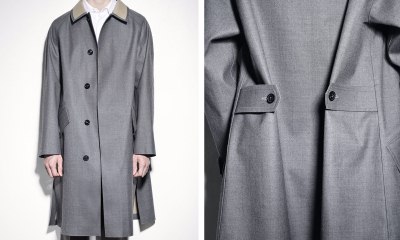 The material from which the raincoat is sewn plays one of the important roles when choosing the smoothing method.
The material from which the raincoat is sewn plays one of the important roles when choosing the smoothing method.
It is necessary to take into account:
- the material itself;
- the presence of a lining;
- style features;
- the presence of decorative elements and finishes.
Leather
A leather coat is a comfortable thing to wear and very practical. The complexity of smoothing such a product depends on the quality of the leather.
But for dense, rough skin with caked wrinkles, this method will not work.... The leather coat is ironed under the following conditions:
- only through additional fabric;
- at the minimum temperature;
- without steam function on the iron.
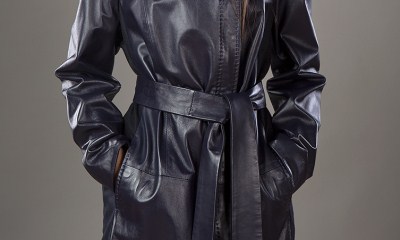 Except for the iron version, helps well straighten a natural leather thing steam exposure... This can be done with a steamer.
Except for the iron version, helps well straighten a natural leather thing steam exposure... This can be done with a steamer.
Another option is to hold the item on a ram over a bathtub filled with boiling water.
The rising steam will soften the skin, which will straighten the creases.... A suede raincoat cannot be ironed, but you can steam it over the bathroom.
Linen and cotton
Natural fabrics are used for sewing lightweight garments intended to be worn in late spring or cool summer.
A light linen or cotton raincoat may not have a lining. In the absence of a lining fabric, you must adhere to the following order:
- The product is ironed from the inside out at a temperature permissible for cotton - up to 200 ° C.
- The use of the steam function is allowed.
- It is desirable that the product is slightly damp. If it has been erased, then iron it without waiting for it to dry completely. For very dry fabrics, it is necessary to pre-moisten the fabric with water using a spray bottle.
- Inside ironing is preferable to front side ironing.
With lining:
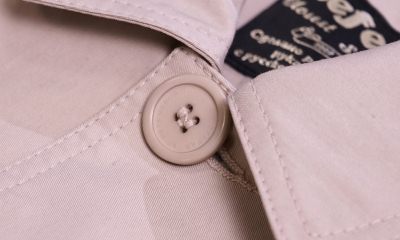 You can iron the raincoat from the wrong side or from the front (preferably through additional fabric).
You can iron the raincoat from the wrong side or from the front (preferably through additional fabric).- When ironing from the inside out, the heating temperature must be set taking into account the maximum possible lining for the fabric.
- Ironing on the front side is best done through a dense, damp cloth. This will help preserve the brightness of the shades and the appearance of the fabric for longer.
Linen and cotton allow for a sufficiently high heating temperature... But if synthetics predominate in the composition of the material, the temperature on the iron should be set to a lower indicator.
Polyester
This material is often used for sewing raincoats. It is not only washable well, but with proper drying on a ram, it practically does not wrinkle.
If a polyester item has been rolled and stored in a compressed state between seasons, it may wrinkle.
Recommendations
Smoothing a raincoat at home can be a snap if adopt the following tips:
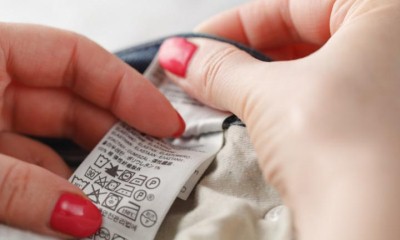 Before you start ironing, you need to examine the label from the inside. It indicates the composition of the fabric and the rules for caring for the product.
Before you start ironing, you need to examine the label from the inside. It indicates the composition of the fabric and the rules for caring for the product.- It is advisable to iron only a clean item.
- All pockets should be checked and foreign objects laid out.
- Additional removable elements, such as a belt, must be removed. They are processed separately.
- The material through which the raincoat is ironed should not shed. Ideally, use a piece of white cotton fabric.
A cloak is a long enough thing that must be stored loosely on a hanger under the cover.
Conclusion
If not necessary, it is better not to iron the raincoat again. Heat treatment, especially from the front of the product, increases material wear.

